
RS485 Network and Interfacing

RS485 Network and Interfacing |
|
"In all large corporations, there is a pervasive fear that someone, somewhere is having fun with a computer on company time. Networks help alleviate that fear."
- John C. Dvorak |
|
Early years Converter between Computer and Net, using 232 Level Converters on the PC side. |
|
... using a MAX232 RS232 level converter (on the right). |
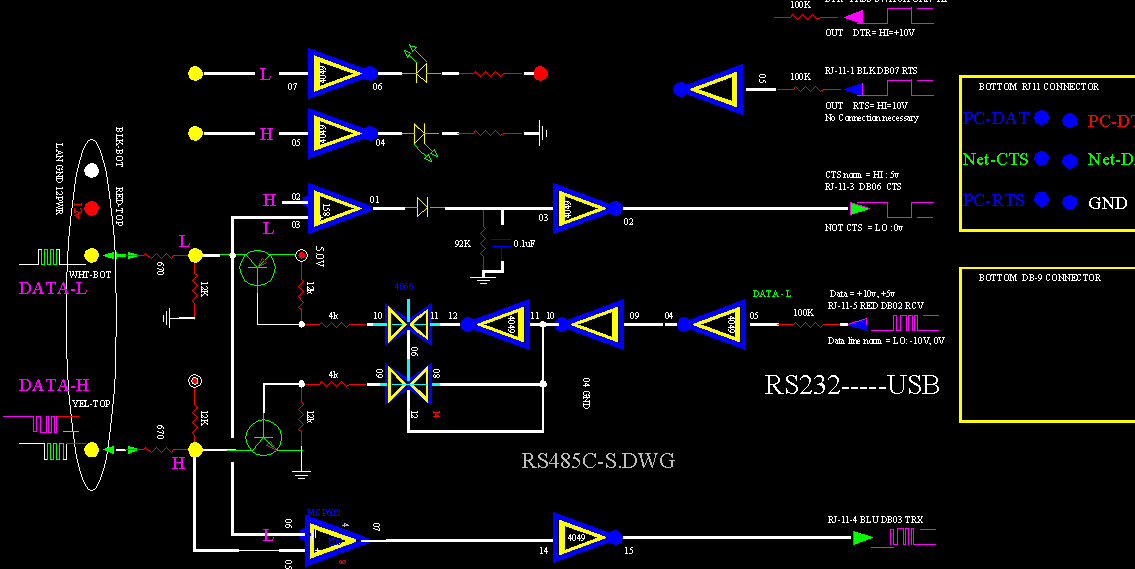 Interfacing to a computer. Open collector design to the Net. TTL levels to the PC.
Interfacing to a computer. Open collector design to the Net. TTL levels to the PC.
|
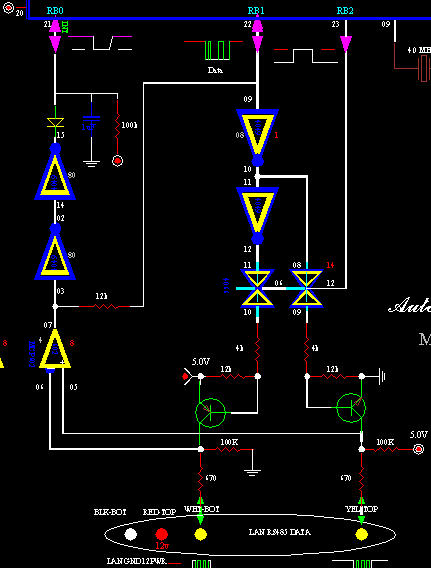
Open Collector design. Node-to-Node, Net Communication. |
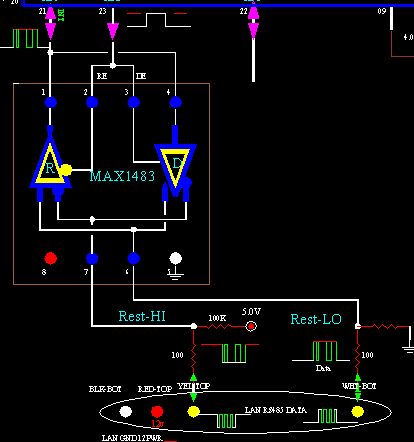
|
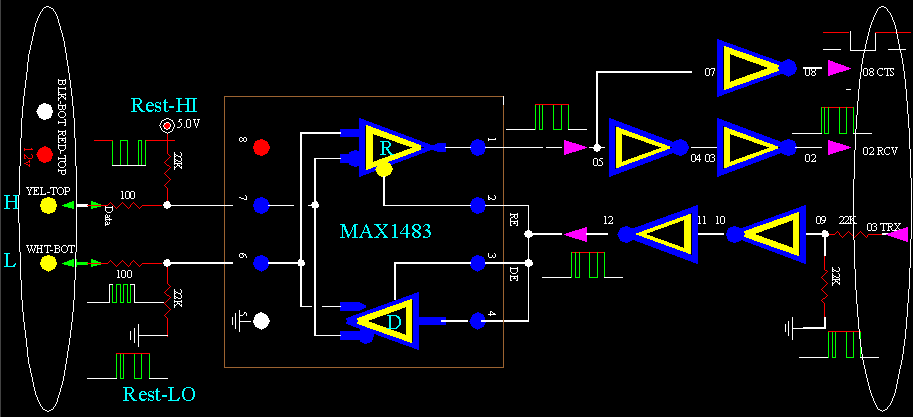
|
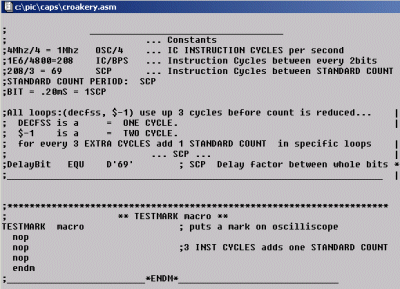
|

|

|

|
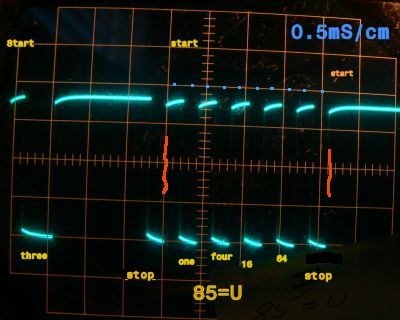
|
 My system uses a 1.5 stop bit, and so there IS an additional half bit space between characters.
I like the alternating pattern: every other byte transmitted is in sync with every other byte.
The bit pattern shifts a half
bit with every byte. This feature can be used to help identify the stop bit, but is not necessary.
I consider the 1.5 stop bit as two parts. When receiving, at half way through the normal one-stop bit, I take a measurement
for nothing more than to verify that it is a stop bit. But now I have free time. I break away for logic
gymnastics. I use less than 50uS of the remaining one-stop bits time. A half bit is 100uS. I do not really
need the additional part. All my work can fit into half of the normal one-bit stop bit. But who knows what
the future will bring, so I include the additional part as waisted dead time, just for esthetics and the
timing signature that I previously mentioned. That brings the total up
to two halves: or 208uS. That would hold an enormous amount of code! You will find that during the
stop bit is a handy time to do CRC updates and character studies. There is additional real estate in the
start bit, if you concede that information is not available to work with untill the stop bit.
Asynchronous transmission is used
between characters and - of course - between packets.
My system uses a 1.5 stop bit, and so there IS an additional half bit space between characters.
I like the alternating pattern: every other byte transmitted is in sync with every other byte.
The bit pattern shifts a half
bit with every byte. This feature can be used to help identify the stop bit, but is not necessary.
I consider the 1.5 stop bit as two parts. When receiving, at half way through the normal one-stop bit, I take a measurement
for nothing more than to verify that it is a stop bit. But now I have free time. I break away for logic
gymnastics. I use less than 50uS of the remaining one-stop bits time. A half bit is 100uS. I do not really
need the additional part. All my work can fit into half of the normal one-bit stop bit. But who knows what
the future will bring, so I include the additional part as waisted dead time, just for esthetics and the
timing signature that I previously mentioned. That brings the total up
to two halves: or 208uS. That would hold an enormous amount of code! You will find that during the
stop bit is a handy time to do CRC updates and character studies. There is additional real estate in the
start bit, if you concede that information is not available to work with untill the stop bit.
Asynchronous transmission is used
between characters and - of course - between packets.
Communication Harmony and Collision Recovery
Grammar and Syntax